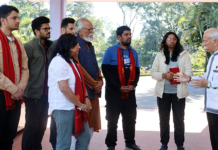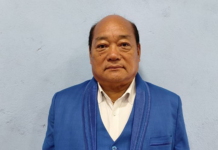[ Ripi Bagra ]
The recent visit by a high-level US congressional delegation to Dharamshala, Himachal Pradesh, led by former House speaker Nancy Pelosi and Congressman Michael McCaul, has reignited tensions between the United States and China over Tibet.
The delegation’s meeting with the Dalai Lama, whom China considers a separatist, was condemned by Beijing, which insists that Tibet is an integral part of its territory and opposes any external interference in what it deems as domestic affairs.
The visit, occurring shortly after the US Congress passed a legislation, ‘Resolve Tibet Act’, urging China to engage in dialogue with Tibetan leaders for a resolution to the longstanding conflict, underscores America’s ongoing support for Tibetan autonomy and human rights.
Dharamshala, where the Dalai Lama has resided since fleeing Tibet in 1959, serves as the de facto headquarters of the Tibetan government-in-exile, which advocates greater autonomy within China.
China’s response has been predictably critical, accusing the US of meddling in its internal affairs and challenging its sovereignty over Tibet. Beijing’s stance reflects its broader strategy of asserting control over Tibet through economic development initiatives like the Belt and Road Initiative, while simultaneously tightening political and cultural control over the region.
The visit by Pelosi and other US lawmakers underscores the continuing tensions over Tibet within the broader context of the US-China strategic competition. Tibet’s strategic location, bordering India, Nepal, and other South Asian countries, adds to its significance in regional security dynamics.
The US stance on Tibet reflects its commitment to human rights and religious freedom globally, contrasting with China’s emphasis on sovereignty and territorial integrity. These differences contribute to the complexity of the US-China relations and shape their interactions on a range of international issues.
Historical context
Tibet, historically a Buddhist kingdom with significant cultural and religious autonomy, came under Chinese influence in the 13th century during the Yuan dynasty. However, it maintained a degree of de facto independence until the early 20th century. In 1950, the People’s Liberation Army of China invaded Tibet, leading to the signing of the 17-point agreement in 1951, which affirmed China’s sovereignty over Tibet while ostensibly guaranteeing Tibetan autonomy under Chinese rule.
The Dalai Lama, Tibet’s spiritual leader, was forced to flee to India in 1959, following an uprising against Chinese rule. Since then, he has founded a government-in-exile from Dharamshala, advocating Tibetan autonomy and cultural preservation. This exile government is not recognised by China or by most other countries, which officially acknowledge Tibet as an autonomous region within the People’s Republic of China.
Throughout the latter half of the 20th century and into the 21st century, Tibet has remained a contentious issue in international relations, symbolising broader debates on sovereignty, human rights, and religious freedom.
US position and policies
The United States has consistently expressed concerns over human rights abuses and religious repression in Tibet. It officially recognises Tibet as part of China but supports the middle-way approach proposed by the Dalai Lama, which seeks genuine autonomy for Tibet within China’s constitutional framework. This approach aims to protect Tibetan culture, religion, and identity while maintaining China’s territorial integrity.
The US administrations have periodically engaged with the Dalai Lama and Tibetan leaders in exile, despite strong objections from China. These engagements serve as symbolic gestures of support for Tibetan autonomy and human rights, reflecting American values of democracy and freedom.
China’s perspective and policies
China maintains that Tibet is an inseparable part of its territory, rejecting any notion of Tibetan independence or external interference in its internal affairs.
Beijing argues that its policies in Tibet are aimed at modernisation, economic development, and social stability, dismissing allegations of human rights abuses as Western propaganda.
The Chinese government has implemented strict controls over religious practices, cultural expression, and political dissent in Tibet. Tibetan Buddhists face restrictions on their religious practices, including limitations on the study and recognition of reincarnated lamas, such as the Dalai Lama.
The Chinese Communist Party (CCP) has also promoted mass migration of Han Chinese into Tibet, exacerbating concerns about demographic change and cultural assimilation.
China’s response to international criticism and diplomatic engagements involving Tibetan leaders has been assertive and often confrontational. It views such interactions as attempts to undermine its sovereignty and territorial integrity, and it pressures other countries and international organisations to reject any form of official recognition or engagement with the Dalai Lama and the Tibetan government-in-exile.
Conclusion
Both countries factor Tibet into their strategic calculations. The US supports Tibetan autonomy partly to counterbalance China’s influence, and advocates democratic values in Asia, while China seeks to consolidate control and prevent any challenges to its territorial integrity.
The US-China relationship concerning Tibet is multifaceted, encompassing political, human rights, and strategic dimensions. The US’ engagement with Tibetan leaders reflects its stance on human rights and religious freedom, while China’s response underscores its sensitivity to perceived foreign interference and its assertion of territorial integrity. (The views and opinions expressed in this analysis are solely of the contributor)




